
Solar Home Innovations: Transforming Spaces with Sustainable Solutions
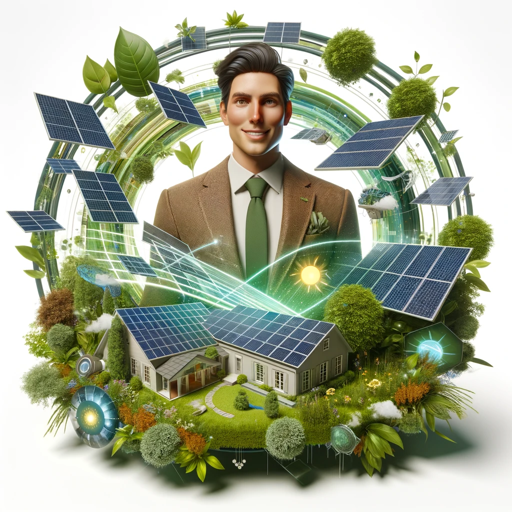
Revolutionizing Living Spaces: Exploring Solar Home Innovations
The evolution of sustainable technologies has brought forth Solar Home Innovations, reshaping the way we power and inhabit our living spaces. This article delves into the cutting-edge innovations that solar technology has introduced, ushering in a new era of energy efficiency, cost savings, and environmental consciousness.
The Rise of Solar Panels: From Rooftops to Facades
Solar panels have become synonymous with harnessing the power of the sun, transforming sunlight into electricity. What was once limited to rooftops has now expanded to innovative applications, including solar facades. These advancements not only enhance energy capture but also contribute to the aesthetic integration of solar technology into the architectural design of homes.
Energy Storage Solutions: Beyond Daylight Hours
One of the key innovations in solar homes is the integration of advanced energy storage solutions. Energy storage allows homeowners to store excess energy generated during the day for use during nighttime or periods of low sunlight. This innovation ensures a continuous power supply, further reducing dependence on traditional grid systems and enhancing overall energy efficiency.
Smart Home Integration: Optimizing Energy Consumption
Solar home innovations often include smart home integration, where technology optimizes energy consumption. Smart thermostats, lighting systems, and appliances are synchronized to use energy efficiently, responding to patterns and preferences. This not only maximizes the benefits of solar energy but also contributes to overall energy conservation and cost savings.
Solar-Powered Heating and Cooling Systems
Solar innovations extend beyond electricity generation to heating and cooling systems. Solar water heaters and solar air conditioning units utilize the sun’s energy to provide climate control, reducing the reliance on conventional energy sources. These innovations contribute to a more sustainable and eco-friendly approach to maintaining comfortable living spaces.
Transparent Solar Technologies: Windows of the Future
Imagine windows that not only let in natural light but also harness solar energy. Transparent solar technologies are emerging as innovations that turn windows into energy-generating assets. These windows can be integrated into the architecture of homes, capturing sunlight without obstructing views. This integration showcases the potential of solar power in enhancing both functionality and aesthetics.
Solar-Powered Appliances: A Green Lifestyle
Solar home innovations encompass a range of solar-powered appliances, from solar water pumps to outdoor lighting. These appliances not only reduce the demand on the traditional grid but also offer a greener lifestyle. Solar-powered chargers for electronic devices, for example, provide a sustainable and convenient way to keep gadgets powered up.
Green Roof Technology: Natural Insulation and Energy Efficiency
Green roof technology, combined with solar innovations, presents a holistic approach to sustainable living. Green roofs, adorned with vegetation, provide natural insulation, reducing the need for excessive heating or cooling. When integrated with solar panels, they form an eco-friendly synergy that promotes energy efficiency and environmental harmony.
Community Solar Initiatives: Shared Benefits
Solar home innovations are not limited to individual residences; they extend to community solar initiatives. These initiatives involve shared solar projects where multiple homes or community buildings benefit from a centralized solar installation. This model allows those without suitable roof space or resources to access the advantages of solar energy, fostering community-wide sustainability.
Financial Incentives and Affordability
As solar technology advances, financial incentives and increased affordability have become integral aspects of solar home innovations. Governments and organizations offer incentives, tax credits, and financing options to make solar installations more accessible. These initiatives empower homeowners to embrace solar innovations without a prohibitive upfront cost, accelerating the adoption of sustainable practices.
Embrace Solar Home Innovations Today
Ready to transform your living space with Solar Home Innovations? Explore the possibilities and learn more about the latest advancements in solar technology at Solar Home Innovations. Take a step towards a more sustainable and efficient future, where innovation and eco-conscious living go hand in hand.
In conclusion, Solar Home Innovations mark a significant leap in sustainable living. From transparent solar windows to community-wide solar initiatives, these innovations showcase the versatility and potential of solar technology. By embracing these advancements, homeowners not only contribute to a greener planet but also enjoy the benefits of increased energy efficiency and reduced environmental impact.
Environmental Stewardship Benefit: Nurturing a Greener Future

Environmental Stewardship Benefit: Nurturing a Greener Future
As awareness of environmental issues grows, individuals and businesses are increasingly recognizing the importance of environmental stewardship. Embracing practices that promote a sustainable and eco-friendly future not only benefits the planet but also contributes to a healthier and more resilient global ecosystem. Let’s explore the multifaceted advantages of environmental stewardship.
Preserving Biodiversity through Sustainable Practices
Environmental stewardship plays a crucial role in preserving biodiversity. By adopting sustainable practices and minimizing ecological impact, individuals and organizations contribute to the protection of diverse species and ecosystems. This proactive approach helps maintain the delicate balance of nature, ensuring the survival of countless plant and animal species.
Mitigating Climate Change Impact
The effects of climate change are becoming increasingly evident, emphasizing the need for proactive measures. Environmental stewardship includes actions that reduce carbon footprints, such as transitioning to renewable energy sources, practicing energy efficiency, and supporting carbon offset initiatives. These efforts collectively contribute to mitigating the impact of climate change on a global scale.
Responsible Resource Management for Future Generations
One of the core principles of environmental stewardship is responsible resource management. This involves utilizing resources efficiently, minimizing waste, and seeking sustainable alternatives. By adopting circular economy practices and prioritizing renewable resources, individuals and businesses contribute to a legacy of environmental responsibility for future generations.
Enhancing Environmental Education and Awareness
Environmental stewardship goes hand in hand with education and awareness. By promoting a deeper understanding of environmental issues, individuals can make informed choices that align with sustainable practices. Educational initiatives create a ripple effect, inspiring others to embrace environmental stewardship in their daily lives and fostering a collective commitment to a greener future.
Supporting Sustainable Agriculture and Food Systems
The food industry is a significant contributor to environmental impact, from production to distribution. Environmental stewardship in agriculture involves adopting sustainable farming practices, reducing pesticide use, and supporting local, organic food systems. These practices not only benefit the environment but also contribute to healthier and more sustainable food options.
Conservation of Natural Habitats
Protecting natural habitats is paramount to environmental stewardship. Efforts to conserve forests, wetlands, and other critical ecosystems are essential for maintaining biodiversity and ecological balance. Conservation initiatives, whether through habitat restoration or the establishment of protected areas, contribute to the long-term health of the planet.
Eco-Friendly Business Practices
Businesses have a crucial role in environmental stewardship. Implementing eco-friendly practices, such as reducing waste, minimizing energy consumption, and adopting sustainable supply chain management, not only benefits the environment but also enhances corporate social responsibility. Consumers increasingly value businesses that prioritize environmental sustainability.
Waste Reduction and Recycling Initiatives
Effective waste management is a key aspect of environmental stewardship. Reducing waste through practices like recycling, upcycling, and composting minimizes the strain on landfills and promotes a circular economy. By embracing responsible waste management, individuals and communities actively contribute to environmental conservation.
Green Infrastructure for Sustainable Development
Environmental stewardship extends to urban planning and development. Green infrastructure, including parks, green roofs, and sustainable building practices, promotes biodiversity, reduces urban heat islands, and enhances overall environmental quality. Integrating green spaces into urban areas contributes to a more sustainable and livable environment.
Advocacy for Environmental Policies
Environmental stewardship involves advocating for policies that prioritize sustainability and environmental protection. By supporting and actively participating in advocacy efforts, individuals contribute to the development and implementation of regulations that address pressing environmental issues on a broader scale.
In conclusion, environmental stewardship is a collective effort that encompasses a wide range of actions and practices. From individual choices to corporate responsibility, each contribution plays a vital role in nurturing a greener future. To learn more about the benefits of environmental stewardship, visit Environmental Stewardship Benefit.
Financial Benefit Returns: Maximizing Your Investments
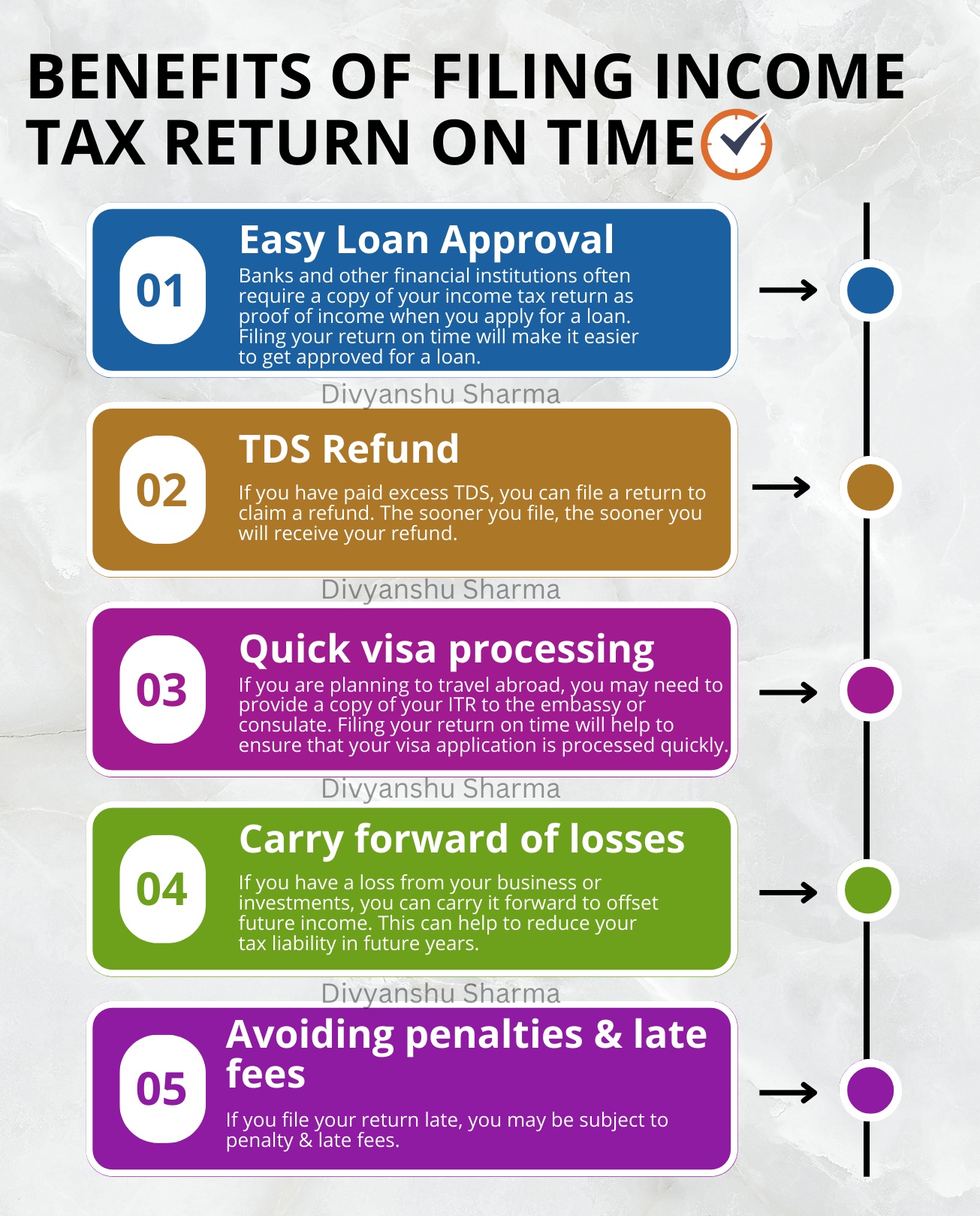
Navigating the Landscape: Unlocking Financial Benefit Returns
In the realm of investments and financial planning, the pursuit of financial benefit returns takes center stage. Understanding how to maximize returns on investments is crucial for individuals seeking to build wealth, secure their financial future, and achieve their long-term goals. This article explores key strategies, considerations, and the importance of a well-rounded approach to financial benefit returns.
Diversification Strategies: Spreading the Risk
Diversification is a fundamental strategy in optimizing financial benefit returns. By spreading investments across various asset classes, industries, and geographic regions, investors can mitigate risks associated with market volatility. Diversification not only safeguards against potential losses in specific sectors but also positions portfolios to capture opportunities for growth.
Risk Management: Balancing Risk and Reward
Achieving significant financial benefit returns often involves a delicate balance between risk and reward. While higher-risk investments may offer the potential for greater returns, they also come with increased volatility and the possibility of significant losses. Understanding risk tolerance, time horizons, and financial goals is essential in developing a risk management strategy that aligns with individual preferences.
Investment Planning: Aligning with Financial Goals
Effective investment planning is a cornerstone of realizing financial benefit returns. Investors should define clear financial goals, whether short-term or long-term, and tailor their investment portfolios accordingly. Whether the objective is wealth accumulation, retirement planning, or funding educational expenses, aligning investments with specific goals enhances the likelihood of achieving desired financial outcomes.
Market Research and Analysis: Informed Decision-Making
Staying informed through market research and analysis is integral to optimizing financial benefit returns. Keeping abreast of economic trends, industry developments, and geopolitical factors allows investors to make informed decisions. This proactive approach empowers investors to adjust their portfolios in response to changing market conditions, potentially capitalizing on emerging opportunities.
Long-Term Perspective: Patience as a Virtue
A long-term perspective is a valuable asset in the pursuit of financial benefit returns. While short-term market fluctuations may create uncertainty, a focus on the long-term horizon allows investors to ride out market cycles and benefit from the compounding effect of returns over time. Patience and discipline are key virtues for those seeking sustained financial growth.
Tax-Efficient Strategies: Maximizing After-Tax Returns
Implementing tax-efficient strategies is crucial in maximizing after-tax financial benefit returns. Utilizing tax-advantaged accounts, tax-loss harvesting, and understanding the tax implications of investment decisions contribute to optimizing returns. Minimizing tax liabilities allows investors to retain a larger portion of their earnings, enhancing overall portfolio performance.
Professional Guidance: Leveraging Expertise
Seeking professional guidance is a prudent step in navigating the complexities of financial benefit returns. Financial advisors and investment professionals bring expertise and market insights to the table, assisting investors in making informed decisions aligned with their financial objectives. Collaborating with professionals ensures a well-informed and strategic approach to investment management.
Adaptability and Flexibility: Responding to Change
The financial landscape is dynamic, requiring investors to remain adaptable and flexible in their strategies. Market conditions, economic factors, and personal circumstances can change, necessitating periodic reassessment and adjustment of investment portfolios. Embracing adaptability allows investors to optimize their financial benefit returns in response to evolving conditions.
Education and Empowerment: Knowledge is Key
Investors are empowered when armed with knowledge. Ongoing education about financial markets, investment instruments, and economic trends enhances investors’ ability to make sound decisions. By continuously expanding their financial literacy, individuals gain the confidence to navigate the complexities of investing and capitalize on opportunities for financial benefit returns.
Conclusion: Maximizing Returns on the Financial Journey
In conclusion, the pursuit of financial benefit returns is a dynamic journey that requires a thoughtful and multifaceted approach. From diversification and risk management to investment planning and tax-efficient strategies, investors can employ various tools and strategies to optimize returns. Embracing a long-term perspective, seeking professional guidance, and staying informed contribute to a well-rounded strategy for maximizing financial benefit returns. Explore more about Financial Benefit Returns here and embark on a journey toward financial empowerment and growth.
Residential Solar Solutions: Harness Clean Energy at Home
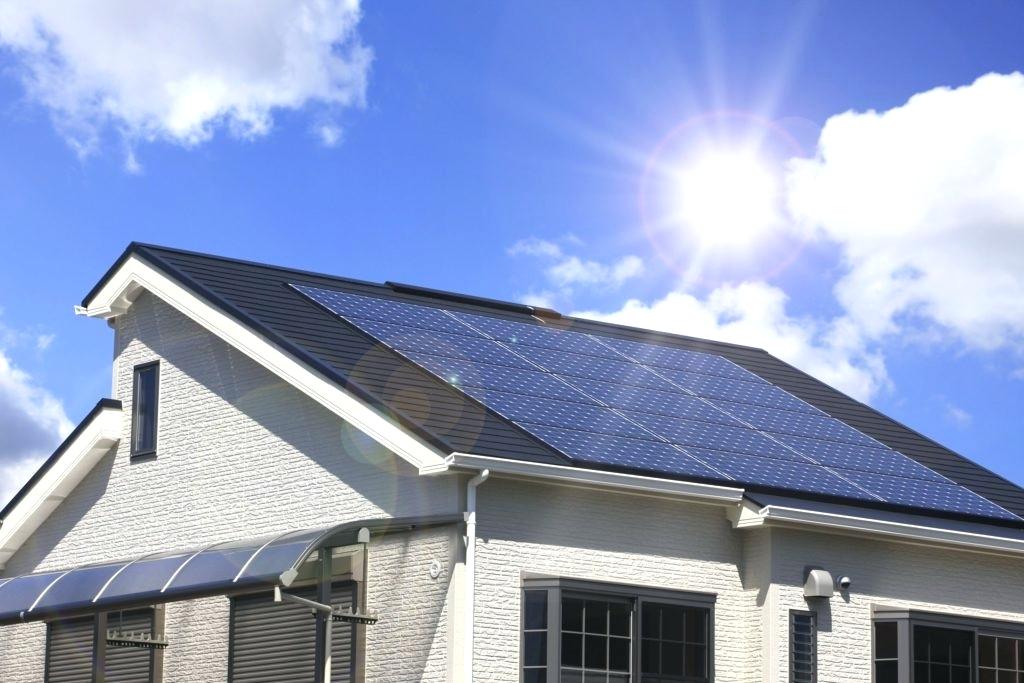
Harnessing Clean Energy at Home with Residential Solar Solutions
Solar power has emerged as a leading solution for homeowners looking to adopt sustainable and eco-friendly energy sources. Residential Solar Solutions offer a practical and efficient way to generate electricity at home while reducing environmental impact. In this article, we’ll explore the benefits, installation process, and environmental impact of residential solar solutions.
The Advantages of Residential Solar Solutions
One of the primary advantages of adopting residential solar solutions is the significant cost savings on electricity bills. By harnessing the power of the sun, homeowners can generate their own electricity, reducing reliance on traditional grid systems. This translates into long-term financial benefits and a more predictable energy expenditure.
Furthermore, residential solar solutions contribute to a cleaner environment by reducing dependence on fossil fuels. Solar energy is a renewable resource that produces electricity without emitting harmful greenhouse gases, helping combat climate change. Additionally, solar panels have a lifespan of 25 years or more, making them a durable and sustainable investment.
The Installation Process Made Simple
Installing residential solar solutions has become increasingly accessible and straightforward. Typically, the process involves a consultation with a solar energy provider to assess the specific needs of the home. Afterward, solar panels are strategically placed on the roof to maximize exposure to sunlight.
Advancements in solar technology have also led to more aesthetically pleasing and efficient solar panel designs. Many modern solar panels seamlessly blend with the architecture of a home, ensuring a visually appealing integration.
Financial Incentives and Rebates
To encourage the adoption of solar energy, many governments and local authorities offer financial incentives and rebates for residential solar solutions. These incentives can significantly offset the initial installation costs, making solar power even more affordable for homeowners.
In addition to governmental programs, some utility companies may offer net metering, allowing homeowners to sell excess electricity back to the grid. This creates an additional revenue stream and further enhances the overall financial benefits of residential solar solutions.
Environmental Impact and Sustainability
Residential solar solutions play a crucial role in promoting environmental sustainability. By generating clean energy on-site, homeowners contribute to the reduction of carbon emissions and the overall carbon footprint. This shift towards sustainable practices aligns with global efforts to combat climate change and build a more environmentally conscious society.
Residential Solar Solution: Taking Action
Ready to make a positive change for your home and the environment? Consider implementing Residential Solar Solutions today. With advancements in technology and financial incentives available, transitioning to solar power has never been more accessible.
Visit solarhelp.info to explore comprehensive resources and guidance on residential solar solutions. Whether you’re a first-time solar adopter or seeking to upgrade your existing system, this platform offers valuable insights to help you make informed decisions.
Conclusion
Residential solar solutions offer a sustainable and cost-effective way for homeowners to embrace clean energy. From the installation process to financial incentives and the positive environmental impact, the benefits are abundant. By taking action and harnessing the power of the sun, homeowners can contribute to a greener future while enjoying long-term energy savings.
Renewable Home Power: A Sustainable Energy Solution
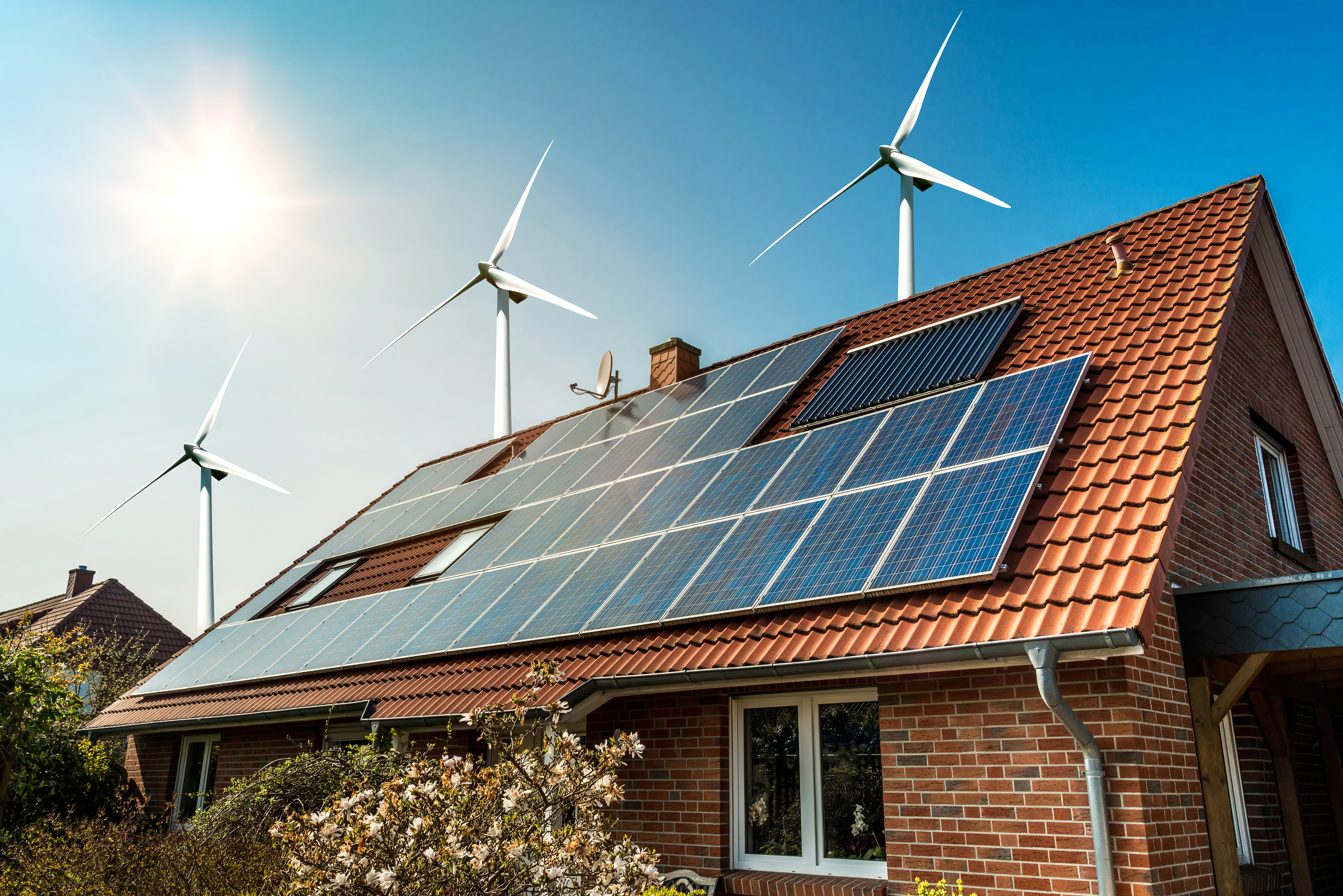
Renewable Home Power: A Sustainable Energy Solution
Renewable home power is revolutionizing the way we meet our energy needs, offering a sustainable alternative to conventional sources. In this article, we will explore the benefits and considerations of adopting renewable energy solutions for your home.
Harnessing the Power of the Sun
Solar energy stands out as a leading source of renewable home power. Solar panels, mounted on rooftops or in dedicated arrays, capture sunlight and convert it into electricity. This clean and abundant source of energy not only reduces reliance on non-renewable resources but also contributes to a lower carbon footprint.
Wind Power: Tapping into a Constant Resource
Another significant contributor to renewable home power is wind energy. Wind turbines, strategically positioned to harness the wind’s kinetic energy, generate electricity. Wind power is a constant and reliable resource, making it a valuable addition to the renewable energy mix for homes, especially in regions with consistent wind patterns.
Hydropower for Sustainable Energy
Hydropower utilizes the energy of flowing water to generate electricity. While large-scale hydropower plants are common, smaller-scale systems can be implemented in homes. Micro-hydro systems can be installed in areas with access to flowing water, providing a continuous and sustainable source of renewable power.
Benefits of Adopting Renewable Home Power
Switching to renewable home power comes with a multitude of benefits. One of the most significant advantages is the reduction of greenhouse gas emissions. Unlike traditional fossil fuels, renewable energy sources produce minimal to no carbon emissions during electricity generation, contributing to a cleaner and healthier environment.
Financial Incentives and Long-Term Savings
Governments and utility companies often offer financial incentives to encourage homeowners to adopt renewable home power. These incentives may include tax credits, rebates, or favorable financing terms for installing solar panels or other renewable energy systems. Additionally, the long-term savings on energy bills make the initial investment in renewable power financially attractive.
Energy Independence and Security
Renewable home power provides a degree of energy independence. By generating your electricity, you become less reliant on external sources and the vulnerability of power grid disruptions. This energy security becomes especially crucial during emergencies or power outages, ensuring a continuous power supply for your home.
Technological Advancements and Efficiency
Ongoing technological advancements in renewable energy systems enhance their efficiency and affordability. Innovations in solar panel design, wind turbine technology, and energy storage solutions contribute to more cost-effective and high-performing systems. Staying informed about these advancements allows homeowners to benefit from the latest innovations.
Considerations and Challenges
While renewable home power presents numerous benefits, there are considerations and challenges to address. The initial cost of installing solar panels or wind turbines can be a barrier for some homeowners, despite long-term savings. Additionally, factors such as weather patterns and geographic location can impact the effectiveness of renewable energy systems.
SolarHelp.info: Your Guide to Renewable Home Power
For comprehensive insights, guidance, and resources on adopting renewable home power, visit Renewable Home Power. The website offers expert advice, tips, and articles to help you make informed decisions about transitioning to sustainable energy solutions. Explore SolarHelp.info for a comprehensive guide to renewable home power and take the first step towards a greener and more sustainable future.
Clean Energy Home: Sustainable Living Solutions
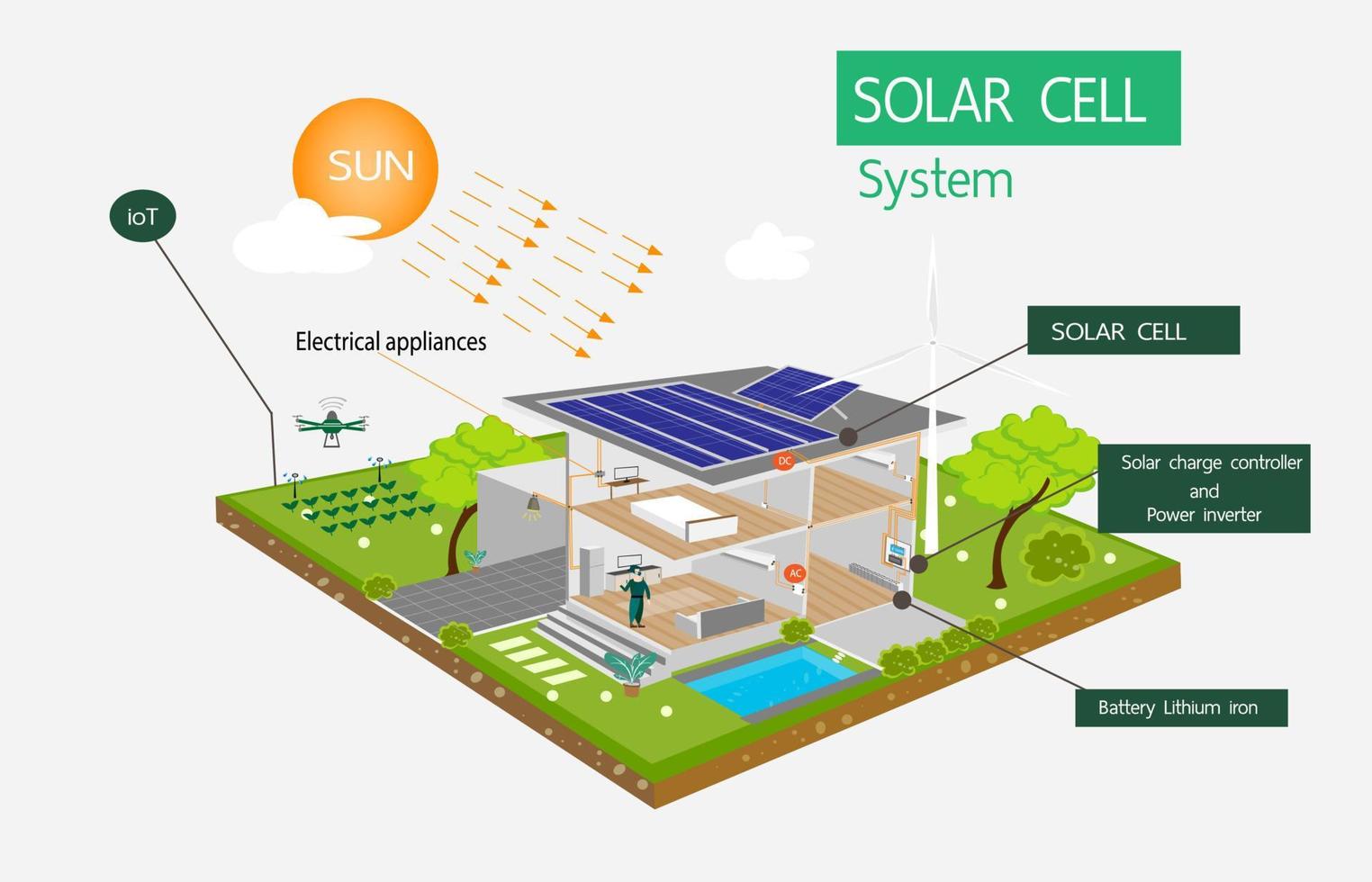
Clean Energy Home: Sustainable Living Solutions
Living in a clean energy home is more than a trend; it’s a commitment to sustainability and reducing environmental impact. Explore the various elements that make a home truly clean energy-powered and discover how it contributes to a more eco-friendly and sustainable lifestyle.
Harnessing Solar Power for Clean Energy
At the heart of a clean energy home is the utilization of solar power. Solar panels, often installed on rooftops or in dedicated solar arrays, capture sunlight and convert it into clean, renewable energy. This shift from traditional power sources to solar energy significantly reduces reliance on fossil fuels, contributing to a cleaner and more sustainable energy landscape.
Energy Efficiency: The Foundation of Clean Energy Homes
Energy efficiency is a cornerstone of clean energy homes. From energy-efficient appliances to well-insulated structures, these homes are designed to minimize energy waste. Smart thermostats, LED lighting, and high-efficiency HVAC systems contribute to a lower overall energy consumption, making the most of the clean energy generated on-site.
Advantages of Clean Energy for Homeowners
Embracing a clean energy home comes with numerous advantages for homeowners. One of the most noticeable benefits is the potential for reduced energy bills. Clean energy homes often generate more power than they consume, allowing homeowners to sell excess energy back to the grid or store it for later use. Additionally, many regions offer incentives and rebates for clean energy adoption, making it financially attractive.
Reducing Carbon Footprint and Environmental Impact
The primary goal of a clean energy home is to reduce the carbon footprint and environmental impact associated with energy consumption. By relying on renewable sources like solar power, homeowners contribute to lower greenhouse gas emissions and help combat climate change. This commitment to environmental stewardship is a fundamental aspect of the clean energy home ethos.
Innovations in Clean Energy Technologies
Continuous innovations in clean energy technologies drive the evolution of clean energy homes. Advanced solar panels, energy storage systems, and smart home technologies are at the forefront of these innovations. These advancements not only improve the efficiency of clean energy systems but also enhance the overall living experience in clean energy homes.
Off-Grid Living and Clean Energy Independence
Some clean energy homes take sustainability a step further by adopting off-grid living solutions. Off-grid homes rely entirely on their clean energy systems, including solar panels and energy storage, without connecting to the traditional power grid. This level of independence enhances resilience, especially in remote or environmentally sensitive locations.
Sustainable Home Design and Architecture
The concept of clean energy homes extends beyond technology to encompass sustainable home design and architecture. Architects and designers play a crucial role in integrating clean energy solutions seamlessly into the aesthetic and functionality of homes. This integration ensures that clean energy homes not only perform efficiently but also align with modern design aesthetics.
Community-Wide Impact: Clean Energy Neighborhoods
The impact of clean energy homes can extend beyond individual residences to entire neighborhoods. Clean energy initiatives at a community level, such as shared solar projects or neighborhood-wide energy efficiency programs, create a collective effort toward sustainability. These community-wide initiatives contribute to a more resilient and environmentally conscious society.
Educational Outreach for Clean Energy Awareness
Raising awareness about clean energy homes is vital for widespread adoption. Educational initiatives, workshops, and community outreach programs play a crucial role in informing homeowners about the benefits and feasibility of clean energy solutions. By empowering individuals with knowledge, these initiatives foster a culture of clean energy awareness and adoption.
Clean Energy Home: A Sustainable Future
In conclusion, a clean energy home is not just a dwelling; it’s a symbol of a sustainable and eco-friendly future. From harnessing solar power to adopting energy-efficient practices, every aspect contributes to a cleaner, greener, and more resilient lifestyle. Explore the possibilities of Clean Energy Home at solarhelp.info and embark on the journey towards a sustainable and energy-efficient living space.
Solar Home Power: Harnessing Energy for Sustainable Living

The Rise of Solar Home Power
Solar home power has emerged as a game-changer in the quest for sustainable and eco-friendly living. This article delves into the various aspects of solar energy for homes, exploring its benefits, installation process, and the positive impact it has on both the environment and homeowners’ wallets.
Harnessing Solar Energy for Sustainable Living
At the core of solar home power is the utilization of sunlight to generate clean and renewable energy. Solar panels, typically installed on rooftops, capture sunlight and convert it into electricity through photovoltaic cells. This sustainable energy source reduces dependence on traditional electricity grids, contributing to a greener lifestyle.
Environmental Benefits of Solar Power
One of the significant advantages of solar home power lies in its positive impact on the environment. Solar energy is a clean and green alternative to conventional power sources, producing electricity without emitting harmful pollutants or greenhouse gases. By choosing solar power, homeowners actively contribute to reducing their carbon footprint and mitigating climate change.
Financial Savings through Solar Power
Beyond environmental considerations, solar home power offers substantial financial savings. While the initial installation cost may seem significant, homeowners stand to benefit from reduced or even eliminated electricity bills over the system’s lifespan. Government incentives, tax credits, and net metering programs further enhance the financial viability of adopting solar energy.
The Installation Process Demystified
Installing solar panels for home power is a process that has become increasingly streamlined. The installation typically involves assessing the roof’s suitability, mounting the solar panels, connecting the electrical components, and integrating the system with the home’s power supply. Professional installers ensure that the system is optimized for maximum efficiency.
Off-Grid and Grid-Tied Systems
Homeowners have the flexibility to choose between off-grid and grid-tied solar systems. Off-grid systems operate independently, relying solely on solar power and requiring energy storage solutions like batteries. Grid-tied systems, on the other hand, remain connected to the traditional power grid, allowing excess energy to be fed back into the grid for compensation.
Solar Home Power and Energy Storage
Energy storage solutions, such as solar batteries, play a crucial role in optimizing solar home power. Batteries store excess energy generated during sunny days for use during periods of low sunlight or at night. This enhances the reliability and independence of solar-powered homes, ensuring a consistent energy supply.
Overcoming Challenges in Solar Adoption
While the benefits of solar home power are substantial, challenges exist. Initial costs, variability in sunlight, and aesthetic concerns are common considerations. However, advancements in technology, decreasing equipment costs, and increased awareness of solar benefits are gradually overcoming these challenges, making solar adoption more accessible.
Government Incentives and Policies
Government support through incentives and policies has played a pivotal role in encouraging solar home power adoption. Tax credits, rebates, and favorable net metering policies incentivize homeowners to invest in solar energy. Governments worldwide recognize the importance of transitioning towards sustainable energy sources for a cleaner future.
The Future of Solar Home Power
As technology advances and awareness grows, the future of solar home power looks promising. Innovations in solar panel efficiency, energy storage solutions, and smart grid integration continue to enhance the viability and attractiveness of solar energy for homeowners. The growing trend towards sustainability ensures that solar power will play an increasingly crucial role in powering homes worldwide.
Embracing Solar Home Power for a Brighter Tomorrow
In conclusion, the era of solar home power represents a transformative shift towards sustainable and independent energy solutions. From environmental benefits and financial savings to advancements in technology and government support, the journey towards solar-powered homes is on an upward trajectory. To explore more about solar home power and its transformative potential, visit Solar Home Power for valuable insights and resources. Embrace the power of the sun for a brighter and more sustainable tomorrow.
Clean Power Solution Benefit: Sustainable Energy for All
Harnessing Sustainability: The Clean Power Solution Benefit
In the pursuit of a greener and more sustainable future, the Clean Power Solution Benefit emerges as a beacon of hope. This comprehensive approach to energy generation not only addresses environmental concerns but also brings a host of benefits that resonate across economic, societal, and individual levels.
Understanding Clean Power Solutions: A Holistic Approach
Clean power solutions encompass a range of renewable energy technologies, including solar, wind, hydropower, and geothermal. These alternatives to traditional fossil fuels offer a sustainable and eco-friendly means of meeting energy needs. The Clean Power Solution Benefit lies in their ability to reduce reliance on finite resources and minimize the environmental impact associated with conventional energy production.
Environmental Stewardship: A Cornerstone of Clean Power Solutions
At the heart of the Clean Power Solution Benefit is a commitment to environmental stewardship. By shifting towards renewable energy sources, we reduce carbon emissions, air pollution, and dependence on non-renewable resources. This proactive approach contributes significantly to mitigating climate change and preserving the delicate balance of ecosystems.
Sustainable Energy for All: A Societal Impact
The Clean Power Solution Benefit extends beyond the individual to society as a whole. Access to sustainable energy becomes a catalyst for societal development, particularly in regions where traditional energy sources are scarce. Clean power solutions empower communities, providing a foundation for economic growth, improved healthcare, and enhanced educational opportunities.
Economic Advantages of Clean Power Solutions
One of the compelling aspects of the Clean Power Solution Benefit is its economic impact. Investments in clean energy technologies create jobs, stimulate innovation, and contribute to economic resilience. The transition to clean power solutions presents opportunities for businesses, entrepreneurs, and communities to thrive in a burgeoning green economy.
Energy Independence: A Strategic Clean Power Solution
Clean power solutions play a pivotal role in achieving energy independence. By diversifying energy sources and reducing dependence on imported fossil fuels, nations can enhance their energy security. This strategic shift towards clean energy reduces vulnerability to geopolitical tensions and price fluctuations in the global energy market.
Technological Innovation: Driving Clean Power Solutions Forward
The Clean Power Solution Benefit is intricately linked to technological innovation. Advances in solar panels, wind turbines, energy storage, and smart grid technologies are propelling the efficiency and affordability of clean power solutions. These innovations make renewable energy more accessible and attractive for a wide range of applications.
Resilient Infrastructure: A Clean Power Solution Outcome
Clean power solutions contribute to building resilient energy infrastructure. Decentralized energy generation, smart grids, and energy storage systems enhance the reliability and adaptability of the power grid. This resilience is crucial in the face of natural disasters, cyber threats, and other disruptions that can impact traditional energy sources.
Clean Power Solutions for Rural Development
In rural areas, the Clean Power Solution Benefit is particularly transformative. Clean energy technologies can be deployed in off-grid and remote locations, providing electricity to communities that were previously underserved. This not only improves living standards but also fosters economic activities and social development.
Explore the Clean Power Solution Benefit Today
Ready to embrace the Clean Power Solution Benefit for a sustainable future? Visit Clean Power Solution Benefit for a wealth of resources, guidance, and information. Whether you’re an individual looking to make eco-conscious choices or a community seeking to transition to clean energy, the available resources will empower you to contribute to a cleaner, greener, and more sustainable world.
Green Living Homes: A Comprehensive Guide to Sustainable Living Practices

Unlocking Sustainable Living: A Guide to Green Home Practices
In the pursuit of a more sustainable and eco-friendly lifestyle, many individuals are turning their attention towards creating green living spaces. These homes, designed with a focus on minimizing environmental impact and maximizing energy efficiency, are becoming increasingly popular. Let’s delve into the various aspects of green living homes and explore how they contribute to a more sustainable future.
1. Energy-Efficient Design: The Foundation of Green Living Homes
At the core of green living homes lies the concept of energy efficiency. These homes are meticulously designed to reduce energy consumption and lower their carbon footprint. From well-insulated walls and roofs to strategically placed windows that harness natural light, every element plays a crucial role in minimizing the need for artificial heating, cooling, and lighting.
2. Harnessing Solar Power: A Key Element of Green Living Homes
One of the most impactful features of green living homes is the integration of solar power systems. Solar panels on rooftops convert sunlight into electricity, providing a clean and renewable energy source. This not only reduces dependence on traditional energy grids but also contributes to the overall reduction of greenhouse gas emissions. To learn more about incorporating solar power into your home, check out Green Living Home.
3. Sustainable Materials: Building a Greener Foundation
The construction industry is a significant contributor to environmental degradation. Green living homes, however, prioritize the use of sustainable and eco-friendly materials. From recycled wood and bamboo to energy-efficient windows made from recycled glass, every choice in construction materials is a step towards minimizing the environmental impact of the building process.
4. Water Conservation Strategies: A Vital Component
Green living homes go beyond energy considerations and also focus on water conservation. Incorporating water-efficient appliances, installing rainwater harvesting systems, and implementing landscaping designs that require minimal irrigation are just a few strategies to reduce water consumption. These homes aim to strike a balance between human comfort and responsible water usage.
5. Smart Home Technology: Enhancing Efficiency
The integration of smart home technology plays a pivotal role in green living homes. From programmable thermostats that optimize energy use to smart lighting systems that adjust based on occupancy, these technologies enhance overall energy efficiency. Remote monitoring and control of various home systems further contribute to minimizing wastage and maximizing sustainability.
6. Waste Reduction and Recycling: Closing the Loop
In a green living home, waste reduction is a priority. Homeowners are encouraged to adopt a zero-waste mindset by recycling and composting. Designing homes with built-in recycling systems and composting areas makes it easier for residents to follow environmentally conscious practices. By closing the loop on waste management, green living homes contribute to a circular economy.
7. Eco-Friendly Landscaping: A Green Oasis
The commitment to sustainability extends beyond the walls of green living homes to the surrounding outdoor spaces. Eco-friendly landscaping practices include choosing native plants, utilizing rain gardens, and implementing permeable paving to reduce water runoff. These elements not only enhance the aesthetic appeal of the property but also contribute to local biodiversity.
Embrace the Green Revolution: Your Path to a Sustainable Future
As we navigate the challenges posed by climate change, adopting a green living lifestyle becomes increasingly imperative. Green living homes offer a practical and tangible way for individuals to contribute to a more sustainable future. By incorporating energy-efficient design, harnessing solar power, using sustainable materials, implementing water conservation strategies, embracing smart home technology, reducing waste, and creating eco-friendly outdoor spaces, homeowners can take meaningful steps towards a greener and more sustainable lifestyle. The journey towards a green living home is not only an investment in personal well-being but also a contribution to the well-being of our planet.
Sustainable Home Power: Green Energy Solutions for Residences
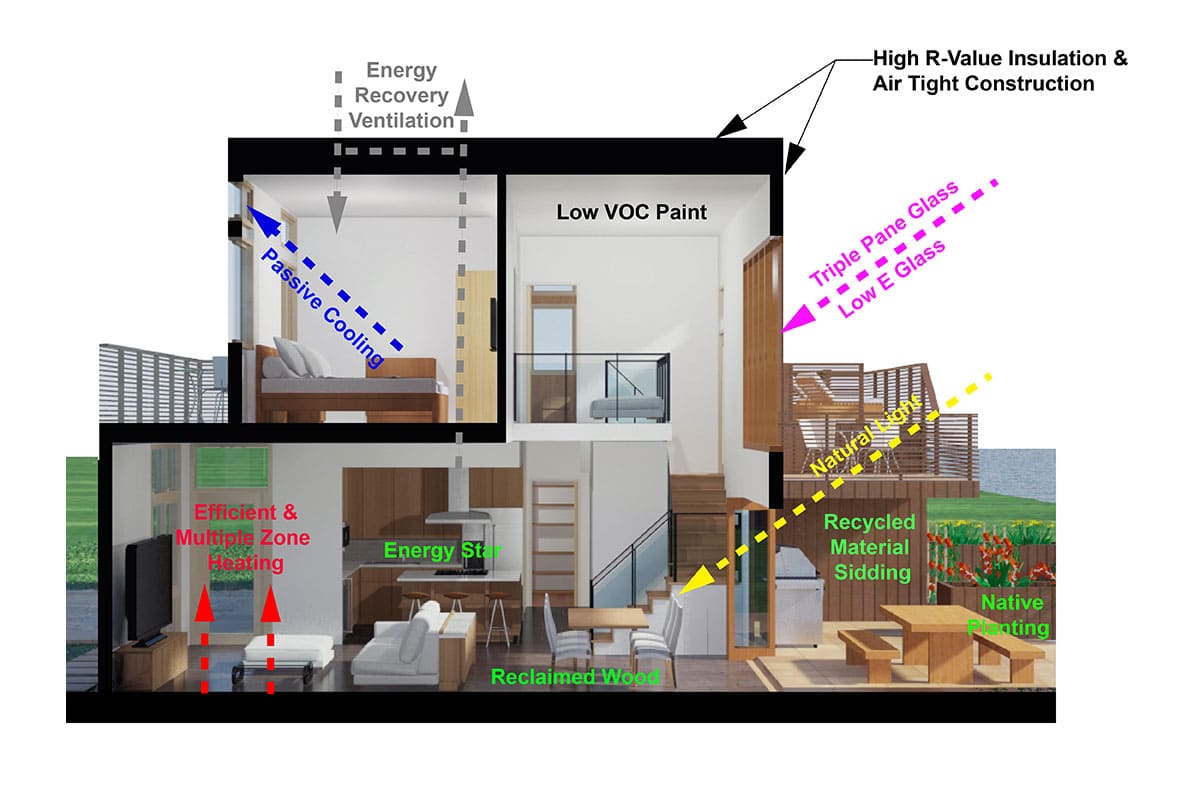
Empowering Residences: The Era of Sustainable Home Power
As the world shifts towards sustainable living, harnessing Sustainable Home Power emerges as a pivotal step. In this exploration, we’ll delve into green energy solutions designed for residences, providing both environmental benefits and energy independence.
Understanding Sustainable Home Power
Sustainable home power revolves around the concept of generating energy for residential use through environmentally friendly and renewable sources. This approach aims to reduce reliance on conventional energy grids, lower carbon footprints, and promote a more eco-conscious lifestyle.
Solar Energy: The Cornerstone of Sustainable Homes
At the forefront of sustainable home power is solar energy. Solar panels installed on rooftops or in dedicated areas of a property capture sunlight and convert it into electricity. This clean, renewable source of energy not only reduces electricity bills but also contributes to the overall reduction of greenhouse gas emissions.
Wind Power Integration for Residential Use
Another viable option for sustainable home power is wind energy. Small-scale wind turbines designed for residential use can generate electricity by harnessing the power of the wind. When strategically placed, these turbines offer an efficient and eco-friendly way to supplement energy needs.
Hydropower Solutions for Sustainable Living
In regions with access to flowing water, hydropower can be a valuable sustainable home power source. Micro-hydro systems can generate electricity by utilizing the energy from a stream or river, providing a consistent and reliable power supply for homes.
Energy Storage: Maximizing Sustainability
To enhance the effectiveness of sustainable home power, energy storage systems play a crucial role. Batteries designed for residential use can store excess energy generated during peak sunlight or wind conditions. This stored energy can then be utilized during periods of low renewable energy production, ensuring a consistent power supply.
Smart Home Technologies for Energy Efficiency
Integrating smart home technologies is an integral aspect of sustainable living. Smart thermostats, energy-efficient appliances, and home automation systems allow residents to optimize energy usage, reducing waste and further maximizing the benefits of sustainable home power.
Government Incentives and Financial Benefits
Governments worldwide often offer incentives to encourage the adoption of sustainable home power. These incentives may include tax credits, rebates, or feed-in tariffs, making the transition to green energy solutions more financially attractive for homeowners.
Community Solar Initiatives and Collaborations
In some cases, community solar initiatives allow residents to collectively invest in and benefit from solar energy installations. These collaborations foster a sense of community and amplify the positive impact of sustainable home power by making it accessible to a broader audience.
Educational Resources for Homeowners
Transitioning to sustainable home power requires knowledge and understanding. Educational resources and support from organizations like SolarHelp.info empower homeowners with information on the benefits, installation processes, and maintenance of sustainable energy systems.
Embracing a Sustainable Future: Take Action Today
Ready to embrace sustainable home power and contribute to a greener future? SolarHelp.info offers a wealth of resources to guide you on the journey. Explore the possibilities of solar, wind, and hydropower for your residence, and join the growing community of individuals committed to sustainable living.
Conclusion
Sustainable home power is not just a trend; it’s a transformative approach to energy consumption. By harnessing the abundant and renewable resources around us, residences can become self-sufficient, environmentally friendly powerhouses. The era of sustainable home power is here, offering a path to energy independence and a greener, more sustainable future for all.










